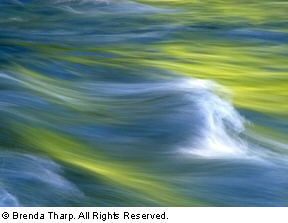
“Why do you photograph?”
The workshop participants looked at me with surprise. I asked my question again and told them to write down their responses. It was an exercise that had nothing to do with a camera or f-stops, and it was unusual. Since this was a workshop on learning to see creatively, my students figured their thoughts must be important and off they went to write.
Each time I assign this exercise, the answers to that question continue to astound and inspire me. In the anonymity of unsigned papers, emotions and heartfelt truths come out in the written word. “To be closer to flowers and plants and all living things is exciting to me. Somehow, as I am learning to see more with my camera, I am also learning to see more without it,” wrote one participant. Another student wrote, “I photograph so I can attempt to portray the essence of my subject, to try to find its spirit.” Still another stated, “…The process allows me to express my connection to the spirit of place, the spirit of time, and the spirit of people. As this connection expresses itself through the images, photography becomes an expression of my spirit, my timelessness, my humanity.”
Wow!
Time and again, similar thoughts are recorded and, in the process, result in clarified vision. Why do we photograph? For many, it’s not about making a living from their images. Nor is it simply for entry in salons or club competitions. The reason for creating a photograph is to convey our personal view, our reaction to what we see–i.e. the emotional experience of something. Photography serves to stop time, to encapsulate a moment, to make it stay, and to share with others what we saw and felt. That experience, that connection with a moment in time and the sharing of it later, is a wonderful gift–both to the photographer and to others. That gift may be given through a framed print, note cards, calendars, presentations, or even exhibits. There are numerous ways to share the gift we’ve been given.
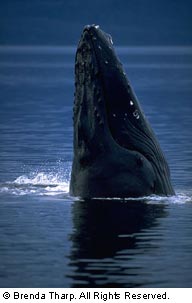
In certain world cultures, it’s believed that a photograph captures the soul or spirit. Perhaps those beliefs are not far off from the truth. If your photographs are good, even great, then hopefully you will have captured some of the spirit of what you saw and experienced in your travels and daily life.
While in southeast Alaska, our captain spotted a spy-hopping humpback whale. As we neared the whale, it rose vertically from the surface, looked at us, and slowly slid into the depths of the ocean. Moments later, it rose again, and we found ourselves peering into the eyes of a magnificent creature. The experience was phenomenal, repeated for over thirty minutes. What an honor–to witness this whale’s curiosity about us and observe it so closely and to capture its strong spirit within the camera.

Photography forces us to look more closely at the world around us. It gives us license to be curious about our environment and the lives of other people. It presents us with an opportunity to become experts at observation. In the words of Albert Einstein, “…Never lose a holy curiosity.” As another participant wrote, “Photography is my way of exploring my world. Framing pictures helps me to mentally zoom in on things around me, and makes me more aware of people’s emotions and activities. In a sense, it makes me more interactive with my environment.”
Being a photographer opens many doors of opportunity for us to learn more about people, to connect with them on different levels. We can bridge the gap between cultures and languages with our images and convey the spirit of a place. The gift of connection was given to me when a young Hispanic girl agreed to be photographed. Her soul-filled eyes express her spirit within an image.
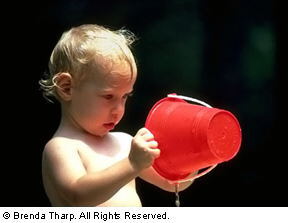
In a similar way, the gift can be presented while watching children, such as this little boy at play, lost in curiosity and fascination about the water pouring from a bucket. It’s the privilege of witnessing the innocence and wonder of a child.
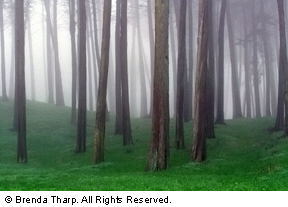
Photography also allows us to observe and record the grandeur of nature, to experience its gifts of beauty. John Sexton (a black-and-white landscape photographer) once said, “Go out and see what the gift is for today.” I headed those words and was presented with a gift of a misty grove of trees on a foggy day in northern California. As the fog ebbed and flowed through the forest like a ghostly tide, I photographed in breathless awe. It was a magical moment that lasted just a short while. Then the fog cleared, and it was over. In subsequent visits to that grove, I haven’t felt the same magic. Yet, I already received the gift, the experience of an ethereal moment in nature, in time.
And yet another experience can teach us to be patient when receiving gifts from nature. It was late afternoon in the southwest, and my joining participants were frustrated with the gray skies and ready for dinner, certain there would be no sunset. I stood my ground. I could see a clearing on the horizon, and I thought, “If that gap stays open when the sun drops, the sunset will light up the land and the clouds above us.” Sure enough, fifteen minutes later, the landscape glowed with the rich, warm light of a desert sunset, and the sand fluoresced. Dinner was forgotten!
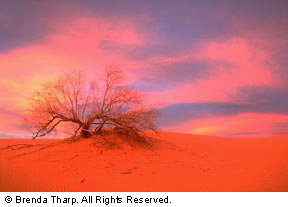
Sometimes, a gift comes to us not only through the photographic process or the experience, but also when we finally share the photograph. A viewer’s words of appreciation and how an image touches them will speak volumes. The gift will be given and received, each in a different sort of wrapping. As photographers, we have a wonderful opportunity to share what we find interesting and beautiful with others and, perhaps, to enrich their lives in some way, to open them to new ways of seeing the world. We have the privilege of using our photographs to make a difference in the world, to show what is right or wrong, to promote interest in change and preservation.
So, take a closer look at your own reasons for photographing. Sit with that question, and write whatever comes to mind. Don’t try to edit what you write – just let the words flow as thoughts come to you. This simple exercise can help you realize what you want to say or do with your photographs. It can help you re-focus. As one participant discovered, “Photography is a way of meditation, a way of moving deeper into the heart of my being, of understanding myself and the world. It has changed my way of seeing everything around me. The gift has been given. It has changed my life.
by Brenda Tharp
Article and images: © Brenda Tharp. All right reserved.

Leave a Reply